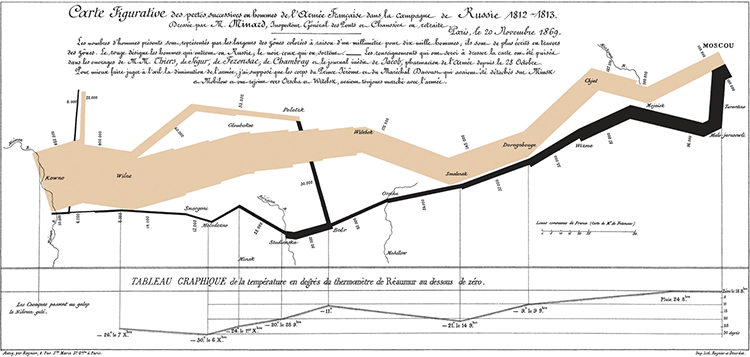Chapter 12 Flows
Flow visualization can be one of the most intuitive and compelling forms of visual representation of quantitative information. One of the most famous examples is Charles Joseph Minardâs chart of Napoleonâs disastrous 1812 campaign against Russia. Published in 1869, it showed loss of life as troops marched into battle and later retreated. As shown in Figure 12-1, route data like Minardâs or like that used in typical traffic analysis is in most cases not a graph, but the same graphical techniques of line width and layout apply to graph data.
Flow is important in understanding systems and patterns of behavior. Flow visualization can be used to describe the structure and state of a system, such as a supply chain or an economy. It can also be used for displaying transactional events, such as information exchange between computers or money transfers between financial accounts. Flow visualization can also be used to depict âsofterâ systems such as behavioral models, showing the potential influence of various factors in a past, current, or future outcome, whether that be financial results or the latest sports scores.

Figure 12-1: One of the most highly regarded visualizations of all time is Minardâs depiction of Napoleonâs ill-fated march on Russia in 1812. The use of route width to indicate volume (here, the size of army as it is decimated) can be applied ...
Get Graph Analysis and Visualization: Discovering Business Opportunity in Linked Data now with the O’Reilly learning platform.
O’Reilly members experience books, live events, courses curated by job role, and more from O’Reilly and nearly 200 top publishers.

